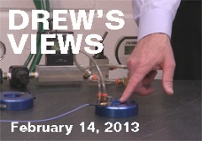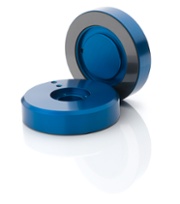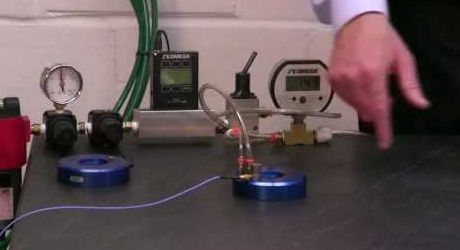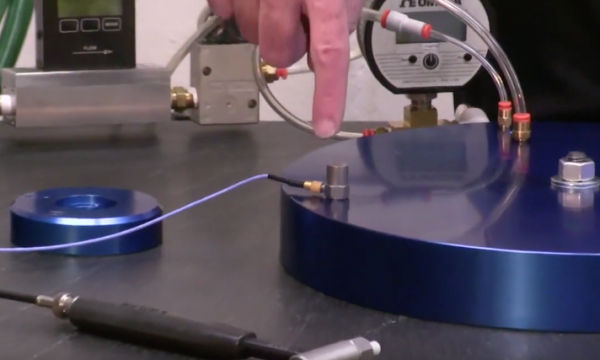
Welcome to the February 14, 2013 St. Valentine’s Day edition of Drew’s Views. This video post was filmed during independent testing of New Way’s 90mm Vacuum Preloaded (VPL) Air Bearing in the Machine Dynamics Labat Penn State University. Dynamics measurement was hosted by Dr. Eric Marsh, Professor of Mechanical Engineering at Penn State, and Director of the Lab. Professor Marsh was kind enough to allow Drew to film the proceedings. To see the video, just click ‘Read More’ and then ‘Play.’
Vacuum Preloaded (VPL) Air Bearings combine air pressure with vacuum, typically to provide a preload where tight application configuration constraints make it difficult to do so by traditional means.
The porous media face of New Way’s 90mm VPL Air Bearing features millions of sub-micron sized holes, through which the air pressure is evenly distributed. A groove in this face enables the vacuum to hold the bearing down while simultaneously lifting it from a guide surface. By adjusting the vacuum and the pressure separately, the fly height and stiffness of these vacuum preloaded air bearings can be optimized.
But the result is counterintuitive. How can a layer of air provide high damping?
Nonetheless, this video of the testing shows that it is so.
The laboratory set-up is simple enough. Testing was conducted on a granite surface using:
- A signal analyzer,
- An instrumented hammer, and
- An accelerometer.
System settings were were established at 60psi air pressure and 15inHg vacuum pressure. 
The results show a first natural frequency of 2500Hz and a damping factor of 6%.
As Drew notes in the video, these are surprising, very high numbers.
As indicated above, vacuum preloaded air bearings are ideal for applications where preloading is difficult or impossible. Obviously, there is a cost advantage because only one flat guide surface is necessary. (Opposed bearing preloading requires two flat guide surfaces that are parallel.
There is also a significant technical advantage. Both “x” and “y” axes can be supported by a single bearing plane. Further, the adjustability of film thickness can be used for focusing, squaring and sub-microinch vertical positioning over a range of several thousandths of an inch.
These bearings are perfect for ultra-precision applications because of their adjustable fly heights, fast settling time and naturally stable design. Using VPLs eliminates the need for stacked linear axes, and the pitch and roll errors inherent therein. They also reduce stack height, as well as Abbe errors.



